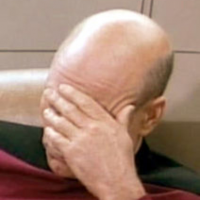We'd like to remind Forumites to please avoid political debate on the Forum... Read More »
We're aware that some users are experiencing technical issues which the team are working to resolve. See the Community Noticeboard for more info. Thank you for your patience.
📨 Have you signed up to the Forum's new Email Digest yet? Get a selection of trending threads sent straight to your inbox daily, weekly or monthly!
legal definition of a 'sample'?
Options
Comments
-
What actual (relevant) precedent are you referring to here?outofcontrolmoaner said:
The video doesn't show the same product, but another patterned blind shown rotating, with a pattern on both sides. This, in my view, adds to the precedent that verticals are usually the same on both sides (clearly there are exceptions, but this should be made clear through words and images). The stills photography only shows the patterned side out, not the partial hemming/blank side.0 -
No trouble at all.outofcontrolmoaner said:
Thanks for this @the_l@the_lunatic_is_in_my_headOP you seem to be saying the blinds match the sample but not the video on the website?
If so the goods do match the sample but not the description
https://www.legislation.gov.uk/ukpga/2015/15/section/11/enacted(1)Every contract to supply goods by description is to be treated as including a term that the goods will match the description.
(2)If the supply is by sample as well as by description, it is not sufficient that the bulk of the goods matches the sample if the goods do not also match the description.
If not I've misunderstood

The company's position is that it doesn't matter how the goods are described (or not) on the website, because a sample was shown (felt, handled, put against a window etc, etc) and that goods cannot be ordered through the site, but only through their 3rd party agents.
This seems to defer responsibility onto the agents. Meanwhile, such a policy would also mean that a company can, effectively, make any kind of description in digital media (and presumably, also, print) because - "customer saw a sample". Therefore such a business model would effectively mean it's the wild west for consumer rights, because "customer saw a sample" and we don't have to transparently represent the entire product in any media assets.
The video doesn't show the same product, but another patterned blind shown rotating, with a pattern on both sides. This, in my view, adds to the precedent that verticals are usually the same on both sides (clearly there are exceptions, but this should be made clear through words and images). The stills photography only shows the patterned side out, not the partial hemming/blank side.
The company say the website page is only there to give, 'an overview' of the product (just not so much of an overview to explicitly show what you'll get - so more of an underview). They don't believe it's mis-selling - I believe it is - and according to your link, the law would appear to agree. Unless I've got my blinds crossed.
Much appreciated - thank you!
Had it been a standard website with a product page showing the video then I think it would be easy to say the legislation above would apply and the goods would not conform to the contract due to not matching the description despite matching the sample.
As it appears to be a general overview of the product the manner is which is presented with everything else considered would need to be taken into account and as much as we can speculate ultimately where you can't reach an agreement with the trader you'd be looking at small claims and the court would pass judgement on the matter. In the game of chess you can never let your adversary see your pieces1
In the game of chess you can never let your adversary see your pieces1
Confirm your email address to Create Threads and Reply

Categories
- All Categories
- 350.8K Banking & Borrowing
- 253K Reduce Debt & Boost Income
- 453.4K Spending & Discounts
- 243.7K Work, Benefits & Business
- 598.5K Mortgages, Homes & Bills
- 176.8K Life & Family
- 256.9K Travel & Transport
- 1.5M Hobbies & Leisure
- 16.1K Discuss & Feedback
- 37.6K Read-Only Boards




